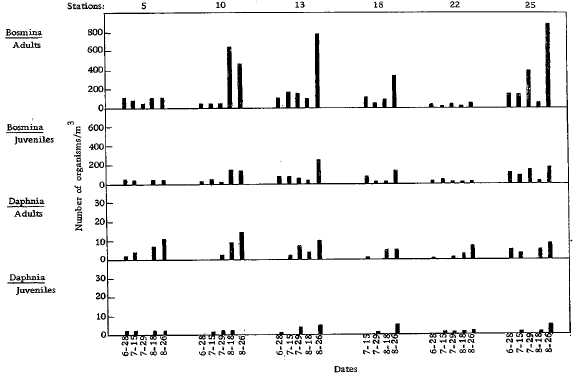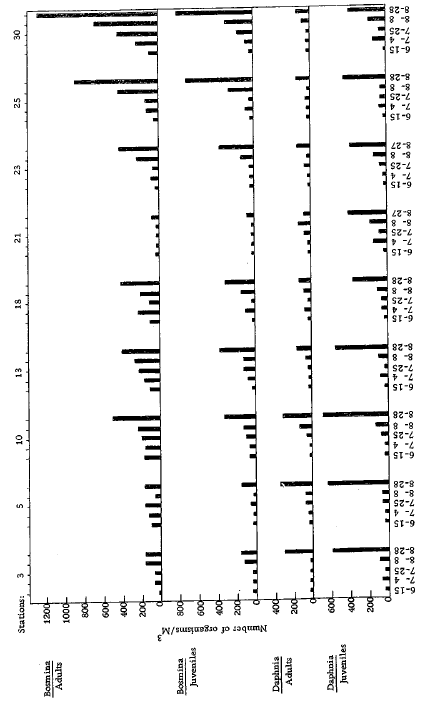The Horizontal Distribution and Vertical Migrations of the Limnetic Zooplankton in Crater Lake, Oregon by F. Owen Hoffman
RESULTS
Horizontal Distribution
During each year, the zooplankton density in Crater Lake gradually increased as the summer progressed. The greatest numbers were sampled in late August, but the zooplankton population probably did not reach a maximum density until some time after the last sample in each summer was taken (Figures 3 and 4).
Bosmina longispina was numerically the most abundant organism sampled. In 1967 it was the dominant zooplankter as the larger cladoceran Daphnia pulex was hardly present in sufficient numbers to merit graphic representation. In 1968 the density of D. pulex had increased greatly over the density observed during 1967, and in a few stations actually outnumbered B. longispina. Because of its larger size, the abundance of D. pulex during 1968 may have been sufficient to dominate the zooplankton biomass despite a greater overall number of B. longispina.
B. longispina varied consistently between the stations sampled during both years, indicating a static clumped horizontal distribution. The stations that were comparatively high and low in B . longispina density throughout the summer of 1967 showed similar results in 1968. Stations 10, 13, and 25 had high densities throughout both summers, while stations 5 and 22 (classified as 21 in 1968) were low. Even when other stations had great increases of B. longispina during late August, station 22 never exceeded 100 organisms/m cubed.
Figure 3. Changes in density of cladocerans in Crater Lake, Oregon, at six locations and five dates during the summer of 1967
Figure 4. Changes in density of cladocerans in Crater Lake, Oregon, at nine locations and five dates during the summer of 1968



